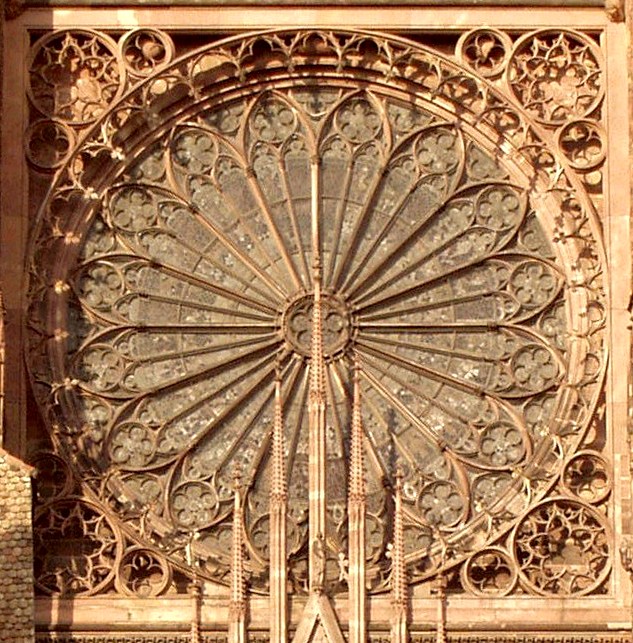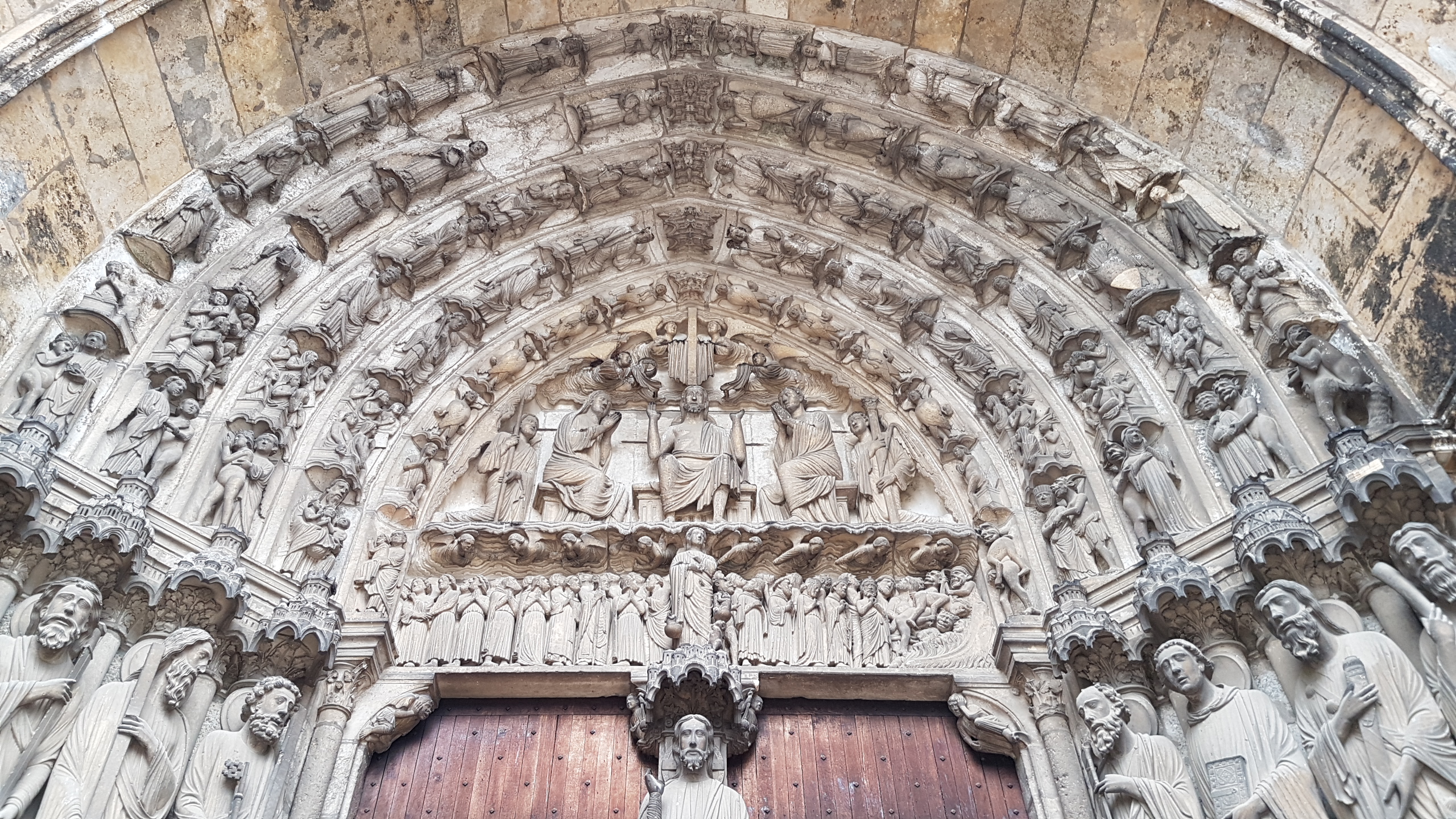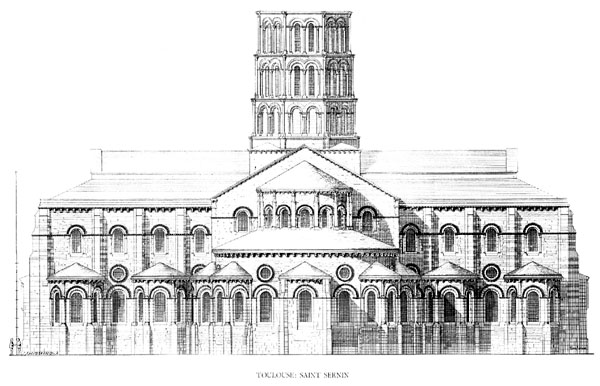|
Church Of Fontarcada
The Church of Fontarcada or Matriz de Fontarcada () was a Romanesque monastic church to a Benedictine monastery founded in 1067, now the parish church of Fontarcada. It was classified as a National Monument by decree on 16 June 1910. It is dedicated to Saint Saviour. History The monastery was founded by a donation of D. Godinho Fafes (or Falifaz), father of the rich count D. Henrique, responsible for building the hunting-lodge of Fontarcada, in whose yard the church was built, possibly at the start of the 12th century. Today nothing remains of the monastery buildings, the monastery having been extinguished in the 14th or 15th centuries. The present church dates to the end of the 13th century and the early 14th century, when the Benedictine monks were entering into disputes as to the rights of the neighbouring aristocrats and landlords. In 1450 king Afonso V of Portugal confirmed the monastery's privileges, five years before the archbishop of Braga Fernando da Guerra decide ... [...More Info...] [...Related Items...] OR: [Wikipedia] [Google] [Baidu] |
Fontarcada Igreja
Fonte Arcada e Oliveira is a ''freguesia'' ("civil parish") in the municipality of Póvoa de Lanhoso, northern Portugal. It was formed in 2013 by the merger of the former parishes Fonte Arcada e Oliveira. The population in 2011 was 1,672,Instituto Nacional de Estatística (INE) Census 2011 results according to the 2013 administrative division of Portugal in an area of 11.06 km². The village Fonte Arcada (also known as ''Fontarcada'') was the birthplace of Maria da Fonte, leader of the Revolution of Maria da Fonte. Until the start of the 19th century it formed a ''couto'' of its own. Its parish church is the church of Fontarcada. References Freguesias of Póvoa de Lanhoso {{Braga-geo-stub ...[...More Info...] [...Related Items...] OR: [Wikipedia] [Google] [Baidu] |
Tympanum (architecture)
A tympanum (plural, tympana; from Greek and Latin words meaning "drum") is the semi-circular or triangular decorative wall surface over an entrance, door or window, which is bounded by a lintel and an arch. It often contains pedimental sculpture or other imagery or ornaments. Many architectural styles include this element. Alternatively, the tympanum may hold an inscription, or in modern times, a clock face. History In ancient Greek, Roman and Christian architecture, tympana of religious buildings often contain pedimental sculpture or mosaics with religious imagery. A tympanum over a doorway is very often the most important, or only, location for monumental sculpture on the outside of a building. In classical architecture, and in classicising styles from the Renaissance onwards, major examples are usually triangular; in Romanesque architecture, tympana more often has a semi-circular shape, or that of a thinner slice from the top of a circle, and in Gothic architecture they ... [...More Info...] [...Related Items...] OR: [Wikipedia] [Google] [Baidu] |
Buildings And Structures In Póvoa De Lanhoso
A building, or edifice, is an enclosed structure with a roof and walls standing more or less permanently in one place, such as a house or factory (although there's also portable buildings). Buildings come in a variety of sizes, shapes, and functions, and have been adapted throughout history for a wide number of factors, from building materials available, to weather conditions, land prices, ground conditions, specific uses, prestige, and aesthetic reasons. To better understand the term ''building'' compare the list of nonbuilding structures. Buildings serve several societal needs – primarily as shelter from weather, security, living space, privacy, to store belongings, and to comfortably live and work. A building as a shelter represents a physical division of the human habitat (a place of comfort and safety) and the ''outside'' (a place that at times may be harsh and harmful). Ever since the first cave paintings, buildings have also become objects or canvasses of much artistic ... [...More Info...] [...Related Items...] OR: [Wikipedia] [Google] [Baidu] |
Churches In Braga District
Church may refer to: Religion * Church (building), a building for Christian religious activities * Church (congregation), a local congregation of a Christian denomination * Church service, a formalized period of Christian communal worship * Christian denomination, a Christian organization with distinct doctrine and practice * Christian Church, either the collective body of all Christian believers, or early Christianity Places United Kingdom * Church (Liverpool ward), a Liverpool City Council ward * Church (Reading ward), a Reading Borough Council ward * Church (Sefton ward), a Metropolitan Borough of Sefton ward * Church, Lancashire, England United States * Church, Iowa, an unincorporated community * Church Lake, a lake in Minnesota Arts, entertainment, and media * ''Church magazine'', a pastoral theology magazine published by the National Pastoral Life Center Fictional entities * Church (''Red vs. Blue''), a fictional character in the video web series ''Red vs. Blue'' * ... [...More Info...] [...Related Items...] OR: [Wikipedia] [Google] [Baidu] |
Presbytery (architecture)
In church architecture, the chancel is the space around the altar, including the choir and the sanctuary (sometimes called the presbytery), at the liturgical east end of a traditional Christian church building. It may terminate in an apse. Overview The chancel is generally the area used by the clergy and choir during worship, while the congregation is in the nave. Direct access may be provided by a priest's door, usually on the south side of the church. This is one definition, sometimes called the "strict" one; in practice in churches where the eastern end contains other elements such as an ambulatory and side chapels, these are also often counted as part of the chancel, especially when discussing architecture. In smaller churches, where the altar is backed by the outside east wall and there is no distinct choir, the chancel and sanctuary may be the same area. In churches with a retroquire area behind the altar, this may only be included in the broader definition of chancel. ... [...More Info...] [...Related Items...] OR: [Wikipedia] [Google] [Baidu] |
Timpano Po Portal Lateral Sul Fontarcada , Australian association football defender
{{disambig, surname ...
Timpano may refer to: *The Italian, Spanish and Portuguese words for eardrum *The singular of Timpani *Timballo, an Italian baked pasta dish *Jacob Timpano Jacob Timpano (born 3 January 1986) in Wollongong, Australia) is a former Australian footballer and current head coach of Wollongong Wolves in the National Premier Leagues NSW. Club career Timpano previously played for the Wollongong Wolve ... [...More Info...] [...Related Items...] OR: [Wikipedia] [Google] [Baidu] |
Cross Pattée
A cross pattée, cross patty or cross paty, also known as a cross formy or cross formée (french: croix pattée, german: Tatzenkreuz), is a type of Christian cross with arms that are narrow at the centre, and often flared in a curve or straight line shape, to be broader at the perimeter. The form appears very early in medieval art, for example in a metalwork treasure binding given to Monza Cathedral by Queen Theodelinda (died 628), and the 8th-century lower cover of the Lindau Gospels in the Morgan Library. An early English example from the start of the age of heraldry proper (i.e. about 1200) is found in the arms of Baron Berkeley. Etymology The word ''pattée'' is a French adjective in the feminine form used in its full context as ''la croix pattée'', meaning literally "footed cross", from the noun ''patte'', meaning foot, generally that of an animal. The cross has four splayed feet, each akin to the foot, for example, of a chalice or candelabrum. In German it is cal ... [...More Info...] [...Related Items...] OR: [Wikipedia] [Google] [Baidu] |
Rose Window
Rose window is often used as a generic term applied to a circular window, but is especially used for those found in Gothic cathedrals and churches. The windows are divided into segments by stone mullions and tracery. The term ''rose window'' was not used before the 17th century and comes from the English flower name rose. The name "wheel window" is often applied to a window divided by simple spokes radiating from a central boss or opening, while the term "rose window" is reserved for those windows, sometimes of a highly complex design, which can be seen to bear similarity to a multi-petalled rose. Rose windows are also called "Catherine windows" after Saint Catherine of Alexandria, who was sentenced to be executed on a spiked breaking wheel. A circular window without tracery such as are found in many Italian churches, is referred to as an ocular window or oculus. Rose windows are particularly characteristic of Gothic architecture and may be seen in all the major Gothic C ... [...More Info...] [...Related Items...] OR: [Wikipedia] [Google] [Baidu] |
Agnus Dei
is the Latin name under which the "Lamb of God" is honoured within the Catholic Mass and other Christian liturgies descending from the Latin liturgical tradition. It is the name given to a specific prayer that occurs in these liturgies, and is the name given to the music pieces that accompany the text of this prayer. The use of the title "Lamb of God" in liturgy is based on , in which St. John the Baptist, upon seeing Jesus, proclaims "Behold, the Lamb of God, who takes away the sin of the world!" Liturgical usage Latin Catholic The Syrian custom of a chant addressed to the Lamb of God was introduced into the Roman Rite Mass by Pope Sergius I (687–701) in the context of his rejection of the Council of Trullo of 692 (which was well received in the Byzantine East), whose canons had forbidden the iconographic depiction of Christ as a lamb instead of a man. The verse used in the first and second invocations may be repeated as many times as necessary whilst the celebra ... [...More Info...] [...Related Items...] OR: [Wikipedia] [Google] [Baidu] |
Archivolt
An archivolt (or voussure) is an ornamental moulding or band following the curve on the underside of an arch. It is composed of bands of ornamental mouldings (or other architectural elements) surrounding an arched opening, corresponding to the architrave in the case of a rectangular opening. The word is sometimes used to refer to the under-side or inner curve of the arch itself (more properly, the ''intrados''). Most commonly archivolts are found as a feature of the arches of church portals. The mouldings and sculptures on these archivolts are used to convey a theological story or depict religious figures and ideologies of the church in order to represent the gateway between the holy space of the church and the external world. The presence of archivolts on churches is seen throughout history, although their design, both architecturally and artistically, is heavily influenced by the period they were built in and the churches they were designed for. Etymology The word origin ... [...More Info...] [...Related Items...] OR: [Wikipedia] [Google] [Baidu] |
Romanesque Architecture
Romanesque architecture is an architectural style of medieval Europe characterized by semi-circular arches. There is no consensus for the beginning date of the Romanesque style, with proposals ranging from the 6th to the 11th century, this later date being the most commonly held. In the 12th century it developed into the Gothic style, marked by pointed arches. Examples of Romanesque architecture can be found across the continent, making it the first pan-European architectural style since Imperial Roman architecture. The Romanesque style in England and Sicily is traditionally referred to as Norman architecture. Combining features of ancient Roman and Byzantine buildings and other local traditions, Romanesque architecture is known by its massive quality, thick walls, round arches, sturdy pillars, barrel vaults, large towers and decorative arcading. Each building has clearly defined forms, frequently of very regular, symmetrical plan; the overall appearance is one of simpli ... [...More Info...] [...Related Items...] OR: [Wikipedia] [Google] [Baidu] |




